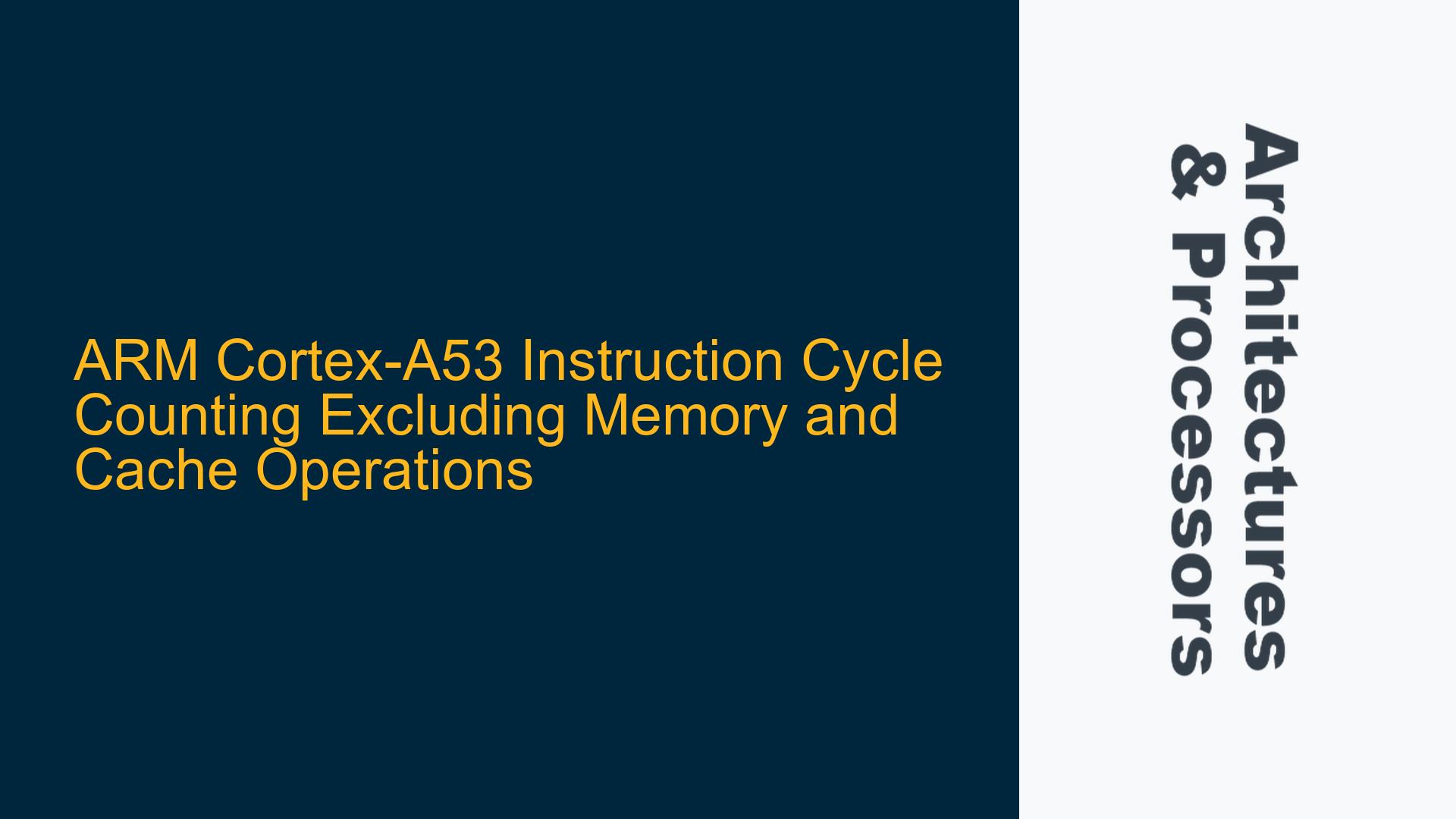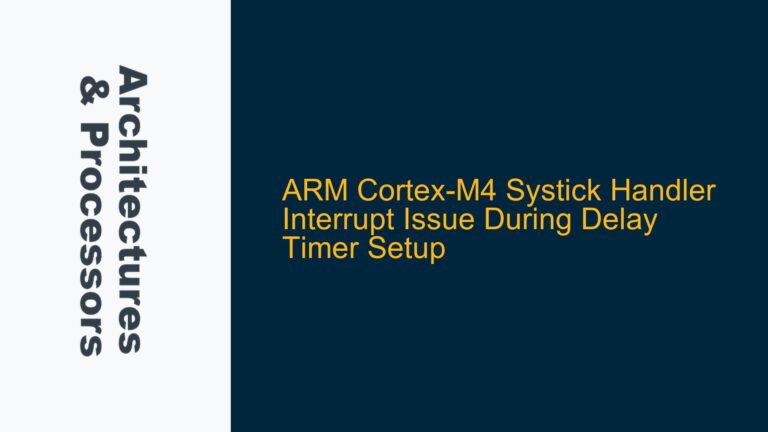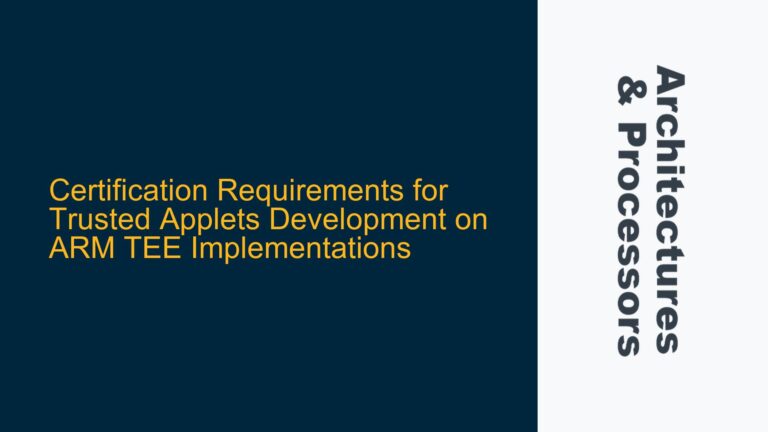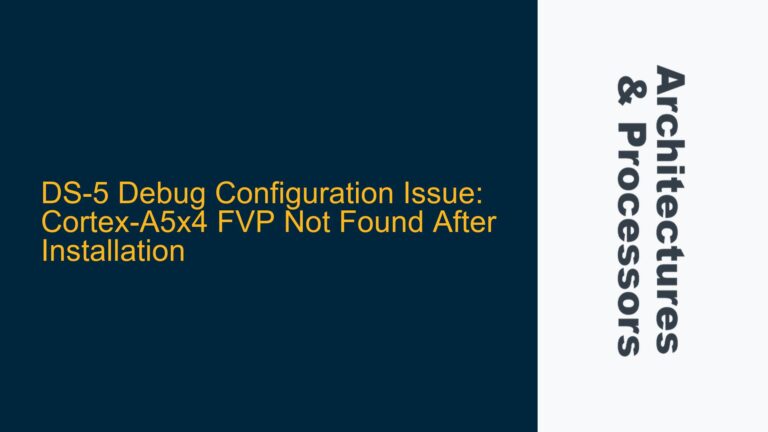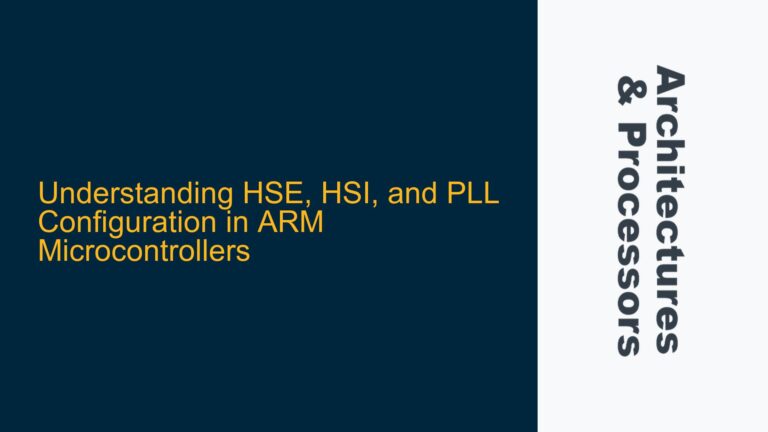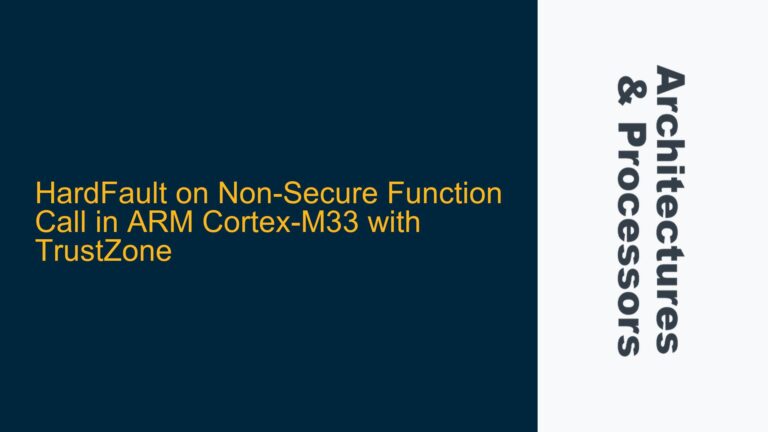ARM Cortex-A53 Instruction Cycle Counting: Excluding Memory and Cache Overheads
When working with the ARM Cortex-A53 processor, accurately measuring the cycle count of instructions while excluding memory and cache operations is a common requirement for performance analysis and optimization. The Cortex-A53, being a highly efficient 64-bit ARMv8-A core, is widely used in embedded systems and mobile applications where understanding pure computational performance is critical. However, the Cortex-A53’s out-of-order execution, pipeline architecture, and memory subsystem interactions complicate the process of isolating instruction execution cycles from memory and cache-related overheads.
The Cortex-A53 employs a dual-issue, in-order pipeline with advanced branch prediction and speculative execution. This architecture allows it to achieve high performance while maintaining energy efficiency. However, the pipeline’s interaction with the memory hierarchy, including L1 and L2 caches, introduces variability in cycle counts when instructions depend on memory accesses. Additionally, the Cortex-A53’s performance monitoring unit (PMU) provides a wealth of counters that can be used to measure various aspects of execution, but isolating pure instruction execution cycles requires careful selection and configuration of these counters.
To exclude memory and cache operations from cycle counting, it is essential to understand the Cortex-A53’s pipeline behavior, the role of the PMU, and the specific performance events that correspond to memory and cache activities. This guide will delve into the architectural details of the Cortex-A53, identify the performance counters that capture memory and cache operations, and provide a detailed methodology for isolating instruction execution cycles.
Performance Counters and Memory/Cache-Related Events in Cortex-A53
The ARM Cortex-A53’s Performance Monitoring Unit (PMU) is a powerful tool for profiling and debugging, offering a wide range of performance counters that can be programmed to track specific events. These events include instruction execution, cache hits and misses, memory accesses, and pipeline stalls. To exclude memory and cache operations from cycle counting, it is necessary to identify and disable the counters that track these activities.
The Cortex-A53 PMU includes several key performance events related to memory and cache operations. These events include:
-
L1 Data Cache Accesses (Event 0x04): This event counts the number of accesses to the L1 data cache, including both hits and misses. Since this event captures all data memory operations, it must be excluded when measuring pure instruction execution cycles.
-
L1 Data Cache Misses (Event 0x05): This event counts the number of L1 data cache misses, which result in accesses to the L2 cache or main memory. Cache misses introduce significant latency and should be excluded from cycle counts focused on instruction execution.
-
L2 Data Cache Accesses (Event 0x16): This event tracks accesses to the L2 data cache. Like L1 data cache accesses, this event should be disabled to exclude memory operations from cycle counting.
-
L2 Data Cache Misses (Event 0x17): This event counts L2 data cache misses, which result in accesses to main memory. These misses introduce even greater latency and must be excluded.
-
Memory Access Cycles (Event 0x0B): This event counts the number of cycles spent waiting for memory accesses to complete. It directly captures the overhead of memory operations and should be excluded.
-
Data Memory Barrier Cycles (Event 0x0C): This event counts cycles spent waiting for data memory barriers to complete. Memory barriers are used to enforce ordering constraints on memory operations and can introduce additional latency.
In addition to these events, the Cortex-A53 PMU provides counters for instruction cache accesses and misses, branch prediction accuracy, and pipeline stalls. While these events are not directly related to memory and cache operations, they can influence overall performance and should be considered when analyzing instruction execution cycles.
To isolate pure instruction execution cycles, the PMU must be configured to exclude the above memory and cache-related events. This can be achieved by selectively enabling only the counters that track instruction execution and pipeline activity, while disabling those that capture memory and cache operations.
Configuring the Cortex-A53 PMU for Pure Instruction Cycle Counting
To accurately measure instruction execution cycles while excluding memory and cache operations, the Cortex-A53 PMU must be carefully configured. The following steps outline the process for setting up the PMU to achieve this goal:
- Identify Relevant Performance Counters: Determine which PMU counters correspond to instruction execution and pipeline activity. These include counters for instruction fetches, instruction decode, and execution pipeline stages. For example, the "Instructions Executed" (Event 0x08) counter tracks the number of instructions executed by the core, while the "Cycles" (Event 0x11) counter measures the
